25 Types of Wood Flooring: An Overview (With Pictures)
-

- Last updated:

What’s the best wood type for flooring? That’s the big question here. There are dozens of different options on the market, and to a “naked eye,” it can be almost impossible to find the right one. Is oak better than chestnut? Can you rely on teak if you live in a humid area? These are just some of the things that’ll pop up in your head when navigating through the various wood species.
Well, your search ends here because we have all the answers! After testing dozens of different wood species (domestically grown and exotic), we came up with the following list. Take your time with it, and we’re confident you’ll find your perfect pick. After checking out the 25 best hardwoods, we’ll talk about various types of wood flooring (like solid and engineered) and their pros and cons. Let’s get to it!
The 25 Types of Wood Flooring
1. White Oak
| Wood Type | Hardwood |
| Janka Hardness Rating | 1,360 lbf |
| Density | 56.2 lb/ft3 |
| Decay Resistance | High |
| Workability | Moderate/High |
This is a never-dying classic: oak looks and feels very natural, which makes it perfect for flooring. It goes great with almost any décor. If you want a light, natural color for your house, go with red oak. It’s got a lovely red/pink hue. As for white oak, it’s a mix of pink and gray. Oak is one of the most popular hardwood species in the US and has an above-average hardness, density, and resistance to decay.
Plus, it takes stain well. Anti-rust protection is average, though—keep that in mind.
2. Walnut

| Wood Type | Hardwood |
| Janka Hardness Rating | 1,010 lbf |
| Density | 38.1 lb/ft3 |
| Decay Resistance | Very High |
| Workability | High |
Another popular choice for flooring in the States, walnut has a very rich, “expensive” brown color that fits both kitchens and bedrooms. However, we don’t recommend using walnut planks in living/dining rooms. This is a soft hardwood with an average hardness rating. Density isn’t very high, either. Furthermore, you’ll have to pay a pretty penny for it.
On the bright side, walnut easily handles environmental factors and is a blast to work with. Besides, it’s lightweight and lasts for a long time.
Find a flooring specialist in your area, and get free, no-commitment estimates for your project.Consult a flooring expert

3. American Cherry
| Wood Type | Hardwood |
| Janka Hardness Rating | 995 lbf |
| Density | 34 lb/ft3 |
| Decay Resistance | Very High |
| Workability | Very High |
As the name suggests, cherry has a very rich, saturated red/pink hue. The grain is wavy, and cherry is considered a soft hardwood, with below-average hardness and density ratings. With that said, it will be a great choice for a first-time project because it’s incredibly easy to shape to your liking. Just like oak and walnut, the American cherry is expensive.
Resistance to sunlight (UV rays) is weak. So, it will be a bad idea to use it for a living room that gets lots of light.
4. Hickory
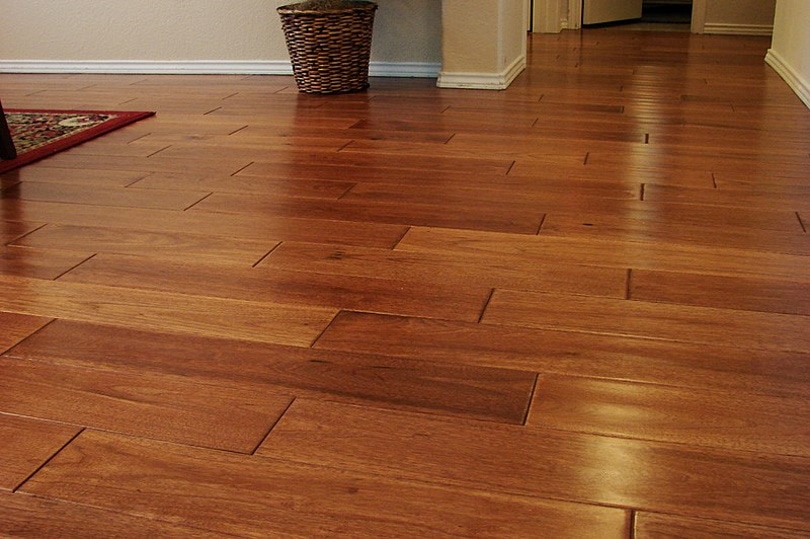
| Wood Type | Hardwood |
| Janka Hardness Rating | 1,820 lbf |
| Density | 38.7 lb/ft3 |
| Decay Resistance | Very Low |
| Workability | Very Low |
Next up, we’ve got one of the strongest (and hardest) wood species for flooring. When properly maintained, hickory lasts for many decades and doesn’t tear. As for the color, it’s got a very noble, light-brown hue and looks beautiful untreated. If you’re a fan of the rustic style, hickory will be right up your alley.
Sadly, flexibility and water/decay resistance are modest at best. And while it’s not particularly pricey, the installation cost tends to be high.
5. Ash
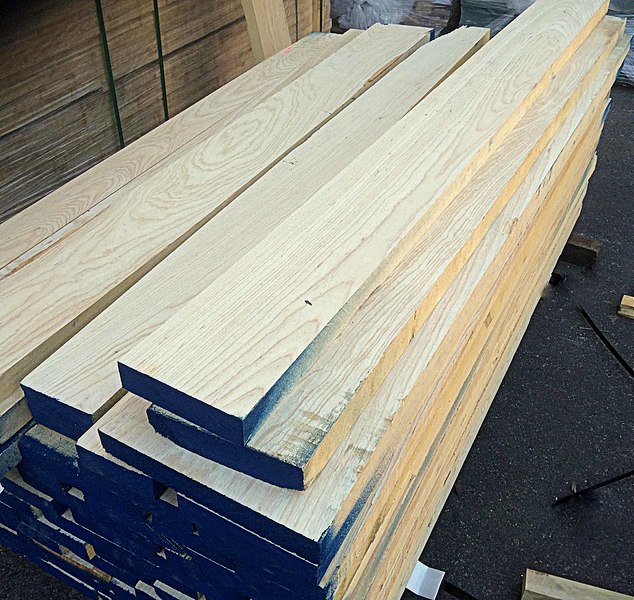
| Wood Type | Hardwood |
| Janka Hardness Rating | 1,320 lbf |
| Density | 53 lb/ft3 |
| Decay Resistance | Low |
| Workability | Moderate |
Perfect for the chic style, ash is a widely appreciated hardwood. The light white color, along with the lovely wood grain, gives it a natural, welcoming look. Ash has a perfect hardness rating: it’s tough enough to withstand “heavy traffic” and still soft to stand on for long hours. It stains well. More importantly, ash is quite cheap.
Unfortunately, it gets dirty easily. Furthermore, this hardwood is not at all resistant to decay (so, no bathrooms for this one).
6. Maple
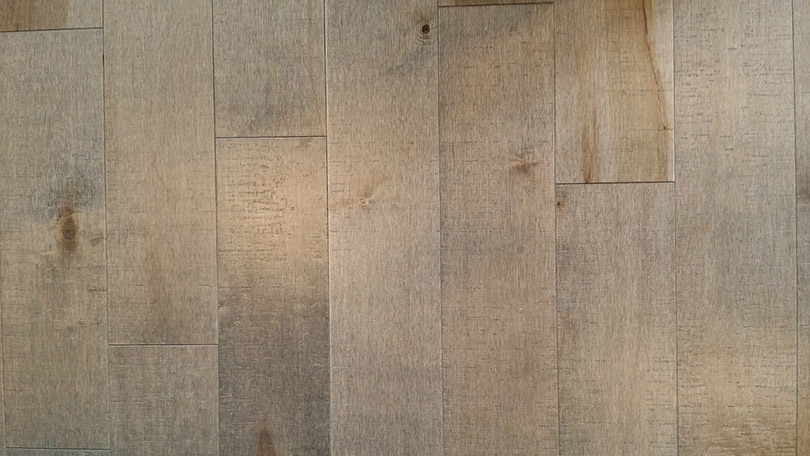
| Wood Type | Hardwood |
| Janka Hardness Rating | 1450 lbf |
| Density | 47.1 lb/ft3 |
| Decay Resistance | Moderate |
| Workability | Moderate |
You can’t go wrong with maple, especially if you’re looking for proper wood flooring for the kitchen. It’s got a very distinctive grain pattern, one that’s found in many American homes. The light, reflective surface is also a big pro. Maple is quite hard and dense, too, which means above-average durability. Flexibility is moderate, just like resistance to natural elements.
Add strong resistance to wear/scratches, a reasonable price, and easy maintenance and you’ll see why it’s so popular.
7. Birch
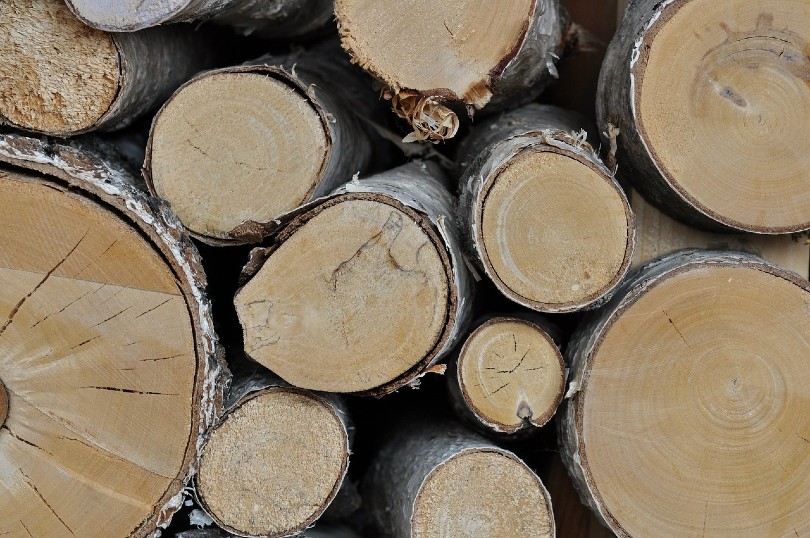
| Wood Type | Hardwood |
| Janka Hardness Rating | 1260 lbf |
| Density | 38.1 lb/ft3 |
| Decay Resistance | Very Low |
| Workability | Moderate/High |
As far as the best wood species for flooring go, birch is definitely in the top-10. This is an affordable, flexible hardwood with above-average hardness and low density. Functional, stylish, and easy to install, it’s a great pick for the average house. However, it swells easily and is generally very weak against moisture and decay. Furthermore, it’s very easy to scratch and dent a birch floor. Back to the good news, it holds stain well.
8. Pine
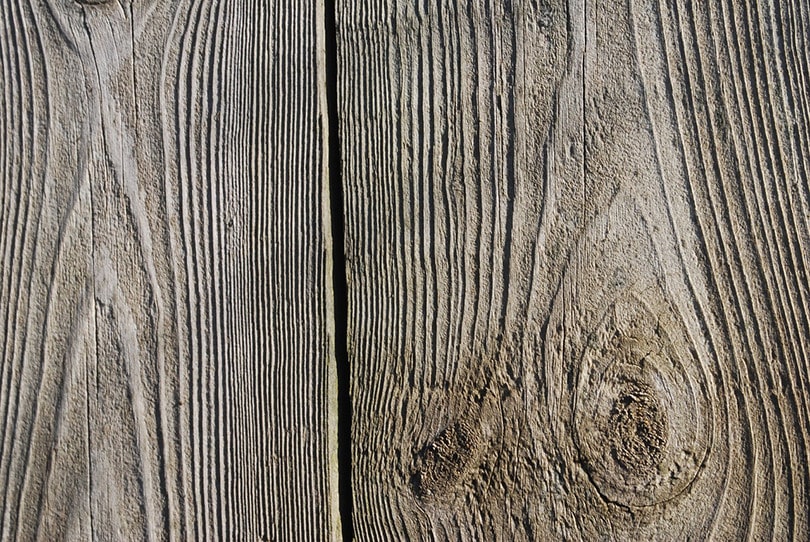
| Wood Type | Softwood |
| Janka Hardness Rating | 1225 lbf |
| Density | 31 lb/ft3 |
| Decay Resistance | Low |
| Workability | High |
Despite a popular belief, pine is a softwood species, not hardwood. Pinewood flooring is a very common choice not only in the US but also around the world because it’s one of the cheapest options for flooring. When stained, pine gets a rich, noble touch. The trademark knots and pinholes, in turn, make it easily recognizable. One of the biggest pros of pine—it gets better as it ages. Sadly, as a softwood species, it’s prone to scratches and dents.
9. Douglas Fir
| Wood Type | Softwood |
| Janka Hardness Rating | 660 lbf |
| Density | 33.1 lb/ft3 |
| Decay Resistance | Moderate |
| Workability | Moderate |
Just like pine, the Douglas fir is a softwood species with below-average hardness and density. That means it’s not very durable and requires special care. Otherwise, you’ll end up with lots of scratches all over the floor. The unique thing about this wood is the universal texture—all planks look the same. The brown/orange color and the grain give it a rustic appeal. You won’t have to spend a fortune on this material, by the way, as it’s quite cheap.
10. Mahogany
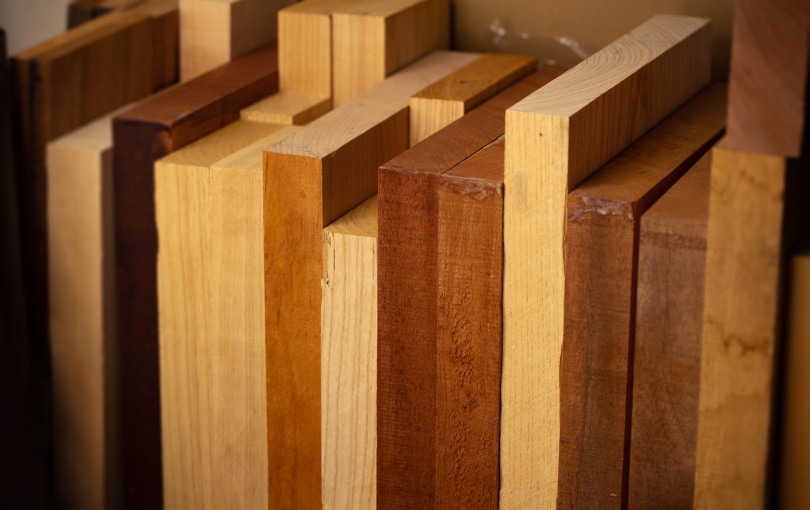
| Wood Type | Hardwood |
| Janka Hardness Rating | 900 lbf |
| Density | 56 lb/ft3 |
| Decay Resistance | Very High |
| Workability | Very High |
In many ways, mahogany is similar to walnut. It’s just as dark, warm, and lush, and, despite the average hardness, this hardwood is quite dense, flexible, and almost immune to decay and rotting. You will have to pay more than the market average for mahogany, though. It’s an imported product, not domestic. But, as a long-term investment, it will be a great choice, thanks to the exquisite look with that wavy grain and extended durability.
11. Teak
| Wood Type | Hardwood |
| Janka Hardness Rating | 2330 lbf |
| Density | 67.4 lb/ft3 |
| Decay Resistance | Very High |
| Workability | Moderate/High |
The first thing that’ll probably catch your attention here is the hardness rating. Yes, teak is one of the most durable, long-lasting, and scratch-resistant wood materials on the planet. That makes it perfect for high-traffic rooms and areas. In addition, it’s highly resistant to moisture, looks great both treated and untreated, and doesn’t take years of experience to work with.
That’s exactly why these days, teak is a go-to hardwood for flooring. It’s not cheap, though, because it’s an imported product.
12. Beech
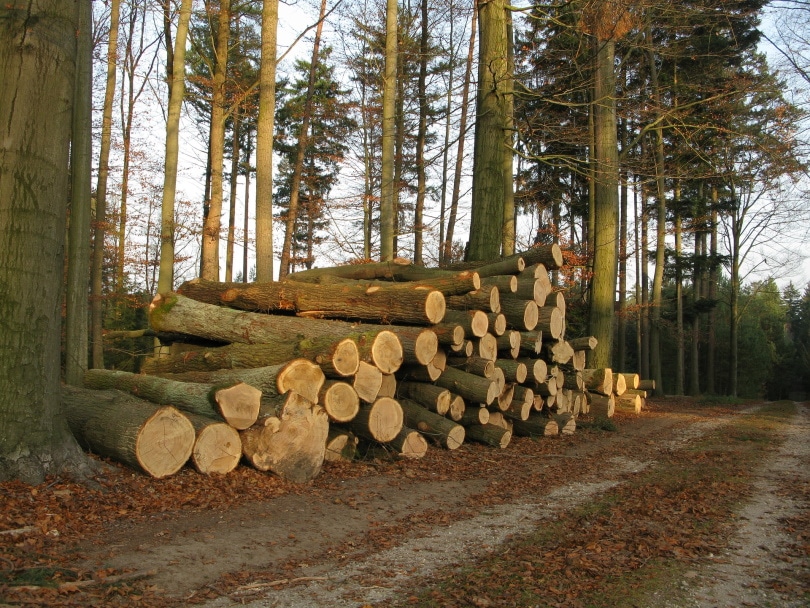
| Wood Type | Hardwood |
| Janka Hardness Rating | 1300 lbf |
| Density | 56 lb/ft3 |
| Decay Resistance | Low |
| Workability | High |
Did you know that beech is one of the longest-living wood species on Earth? Well, that’s true, and it’s a hard, durable material that’s very easy to cut and shape—an excellent choice for hardwood flooring. Pale in color, it has a tranquil, soothing character. Decay resistance is low; so, avoid humid areas. Other than that, beech fit nicely in almost any room. US-grown beech is affordable, too, and serves for decades, with minimal maintenance.
13. Ebony
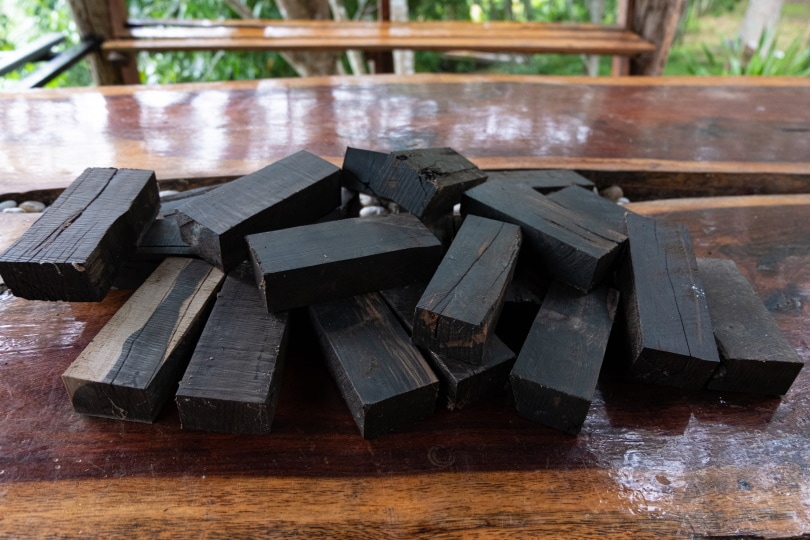
| Wood Type | Hardwood |
| Janka Hardness Rating | 3220 lbf |
| Density | 73.7 lb/ft3 |
| Decay Resistance | Very High |
| Workability | Low |
If you’ve been looking for the hardest wood species out there, you just found it! Ebony has the highest Janka rating and can serve as a brick-strong foundation for your hardwood flooring. However, it’s not particularly flexible. Also, ebony is very expensive, since it’s imported from places like Asia and Africa.
It’s worth it, though, especially if you’re planning on living in the same house for many years. The dark color, beautiful texture, and durability make it all worth your while.
14. Brazilian Tigerwood
| Wood Type | Hardwood |
| Janka Hardness Rating | 2250 lbf |
| Density | 58.1 lb/ft3 |
| Decay Resistance | High |
| Workability | Moderate |
Despite the somewhat “boring” texture, the Brazilian Tigerwood is a safe bet for hardwood flooring. As you can tell from the impressive hardness and density, it requires little maintenance and isn’t afraid of humidity or decay. DIY-friendly, Tigerwood looks a bit like a Bengal tiger (yes, that’s where the name comes from). This is a slightly expensive hardwood species, however, and might not fit a tight budget.
It will be a beneficial investment in the long run, of course.
15. Acacia

| Wood Type | Hardwood |
| Janka Hardness Rating | 1807 lbf |
| Density | 33.7 lb/ft3 |
| Decay Resistance | Very High |
| Workability | High |
Folks in the market for a lovely combination of hardness and aesthetics will like what the Acacia hardwood has to offer. This sturdy, durable and decay-resistant wood material is flexible (thanks to low density) and easy to install. Moreover, it is resistant to scratches, dents, fire, and even fungus attacks. So, that means it won’t rot over time if you live in a hot and humid area. Its biggest appeal is the lush, rural texture.
16. Bamboo
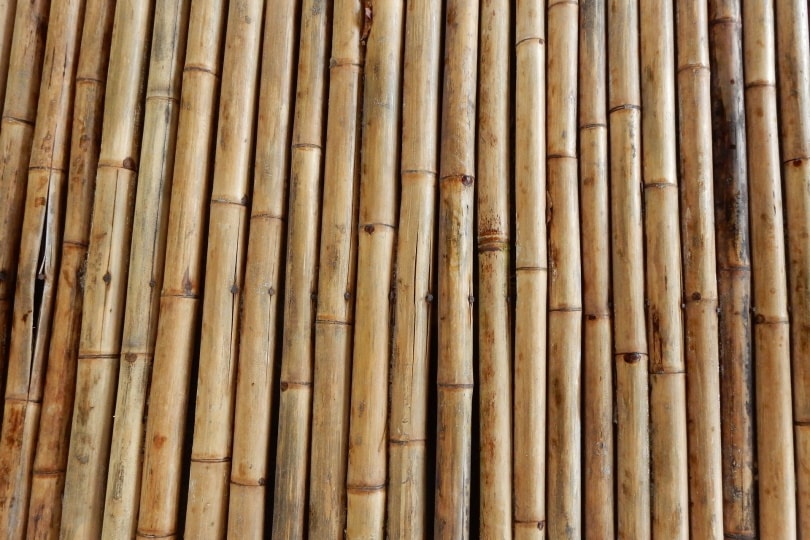
| Wood Type | Hardwood |
| Janka Hardness Rating | 1600 lbf |
| Density | 25 lb/ft3 |
| Decay Resistance | Low/Moderate |
| Workability | Moderate |
It might come as a surprise, but bamboo is quite a decent choice for hardwood flooring. It is hard, strong (1600 lbf), and durable, with moderate workability. Density is low; the same can be said about decay resistance. But, as long as you install it in a dry area that’s protected against direct sunlight, bamboo will work just fine. This is an eco-friendly, fast-growing material (technically, it’s a grass species) that looks even better when refinished.
17. Alder

| Wood Type | Hardwood |
| Janka Hardness Rating | 590 lbf |
| Density | 42 lb/ft3 |
| Decay Resistance | Low |
| Workability | Very High |
Alder derives from the Birch family and serves as the golden middle between the cheaper species like beech and ash and the more expensive options like walnut and maple. Alder is a soft hardwood: it’s not very impressive in terms of the Janka rating. Sadly, that means lower than average resistance to decay, UV rays, and scratches. The good news is—modest strength equals enhanced workability. Yes, this is a highly versatile and flexible material.
18. Poplar
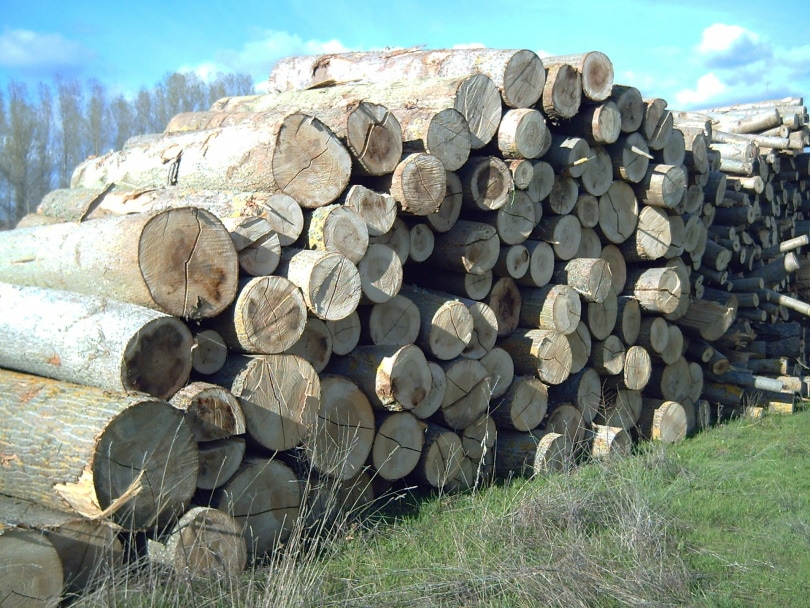
| Wood Type | Hardwood |
| Janka Hardness Rating | 540 lbf |
| Density | 31 lb/ft3 |
| Decay Resistance | Moderate |
| Workability | Very High |
AKA the yellow or the tulip poplar, this is a low-hardness and low-density hardwood with very high workability and a yellow/brown color. The grain and the texture aren’t particularly bright or eye-grabbing, but that’s exactly what some people go for. Easy to stain or paint, poplar won’t be hard to match with any décor in your house. Now, as a soft hardwood, it doesn’t have an extended lifespan.
On the bright side, it is available at a very reasonable price.
19. Cypress
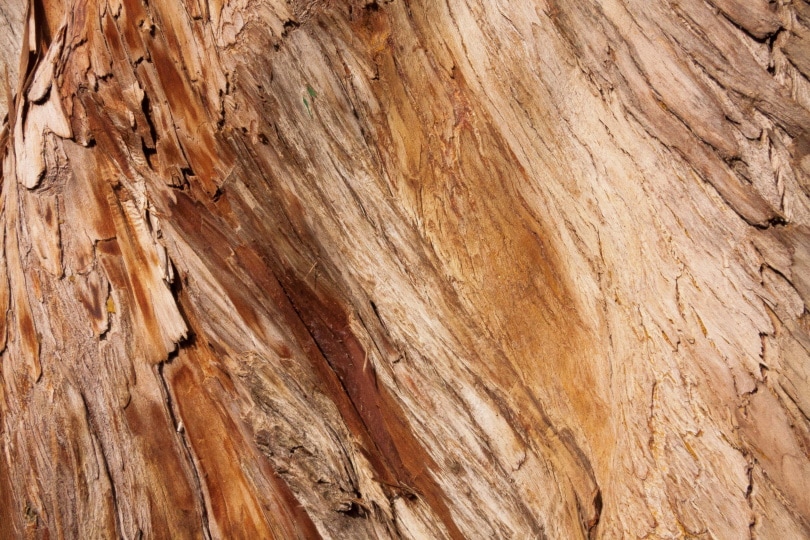
| Wood Type | Softwood |
| Janka Hardness Rating | 1375 lbf |
| Density | 32 lb/ft3 |
| Decay Resistance | Very High |
| Workability | Moderate |
For a coniferous tree (a softwood), Cypress has a noticeably high hardness rating that will put some hardwoods to shame. Plus, it’s got lots of character and can light up even the most boring, generic room in your house. Density is relatively low, while workability is average. One of the best things about this wood: it’s practically “impenetrable” for sunlight (UV rays) and moisture.
Moderately priced and long-lasting, it’s a sure pick for wood flooring!
20. Eucalyptus
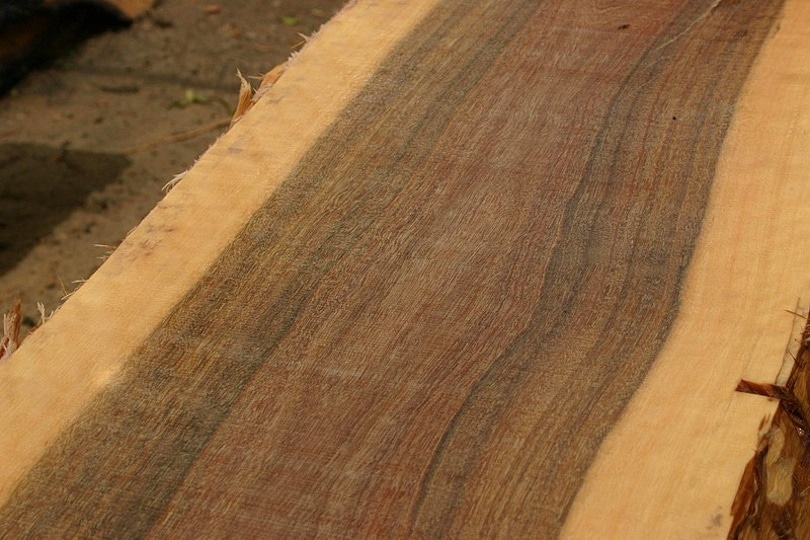
| Wood Type | Hardwood |
| Janka Hardness Rating | 1351 lbf |
| Density | 40.3 lb/ft3 |
| Decay Resistance | Very High |
| Workability | Moderate/High |
Eucalyptus might not have the most amazing texture or colors, but as a hardwood “workhorse”, it will be a great purchase. Thanks to the considerable hardness rating and density, it’s resistant not only to scratches and dents but to decay as well. Cutting and shaping it takes minimal effort; the same can be said about the installation. However, native to Australia, Eucalyptus is pricier than the average domestically grown wood species.
Other than that, it’s a bargain for any wood flooring project.
21. Cork
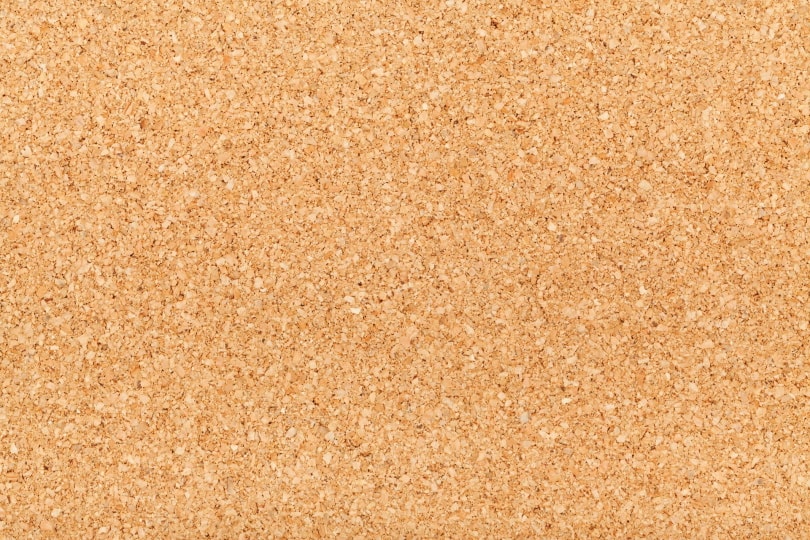
| Wood Type | Hardwood |
| Janka Hardness Rating | 200 lbf |
| Density | 15 lb/ft3 |
| Decay Resistance | High |
| Workability | Low/Moderate |
Cork is an unusual option for wood flooring. On one hand, it’s extremely soft; on the other hand, it’s strong against decay. If you like to walk around the house with bare feet, this could be it for you. Cork is also known for its enhanced insulation properties and resistance to microbes. Sadly, warping can be an issue. Now, it’s not the most flexible wood material on the market, but, overall, cork is a worthy pick.
22. American Chestnut
| Wood Type | Hardwood |
| Janka Hardness Rating | 540 lbf |
| Density | 30 lb/ft3 |
| Decay Resistance | High |
| Workability | Very High |
With some hardwood types, you don’t have to get too close to know that it’s premium timber. That’s exactly the case with the American chestnut. Now, for a hardwood species, it’s not particularly hard or dense. So, expect minor issues with humidity and warping. To compensate for that, chestnut’s workability is through the roof, and it resists decay like it’s nothing.
This isn’t a very popular choice for flooring, but you should, most definitely, keep it in mind.
23. Mesquite
| Wood Type | Hardwood |
| Janka Hardness Rating | 1220 lbf |
| Density | 51.5 lb/ft3 |
| Decay Resistance | High/Very High |
| Workability | Moderate/High |
If you live in a humid climate and want to ensure proper wood flooring for the area, mesquite might be worth a look. Its class-leading resistance to water/humidity, decay/rot, and UV rays makes it a perfect choice for humid environments. Moderately durable and dense, and with a wavy grain, this hardwood has lots of personality (and lots of knots, too).
Either red or brown, mesquite is a bit on the expensive side, especially for a domestic species.
24. Cedar
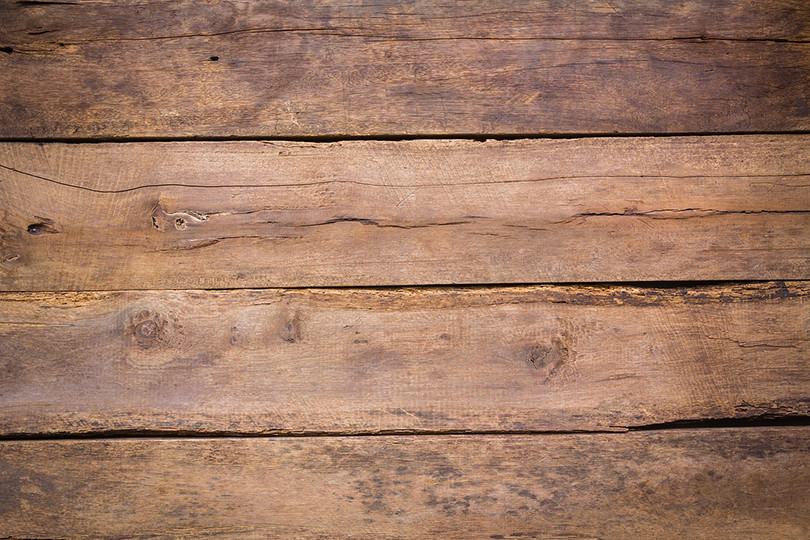
| Wood Type | Softwood |
| Janka Hardness Rating | 900 lbf |
| Density | 25.6 lb/ft3 |
| Decay Resistance | Very High |
| Workability | Very High |
Do you still believe softwood planks are better for wood flooring? Then pay extra attention to cedar. For an evergreen species, it’s quite hard and strong and keeps pests at bay. And, just like mesquite, cedar is a great investment if moisture tends to be an issue in your area. As one of the most popular woods in America, it’s available at a low price. Installation is relatively easy, and minimal maintenance can go a long way.
25. Merbau

| Wood Type | Hardwood |
| Janka Hardness Rating | 1925 lbf |
| Density | 49.9 lb/ft3 |
| Decay Resistance | Moderate/High |
| Workability | Moderate |
Fans of exotic hardwood will take a liking to Merbau. It grows in South-East Asia and is on par with the hardest wood species (1925 lbf). AKA Kwila, it’s becoming more popular in the US thanks to the exotic, yet trendy color pattern and texture. On top of that, it’s not at all expensive (for an imported product, of course), holds stain well, and easily “beats” pests and rotting. So, yes, it will be money well spent.
Hardwood and Softwood: What’s the Difference?
When it comes to lumber, we’ve got two major types: hardwoods, and softwoods. The term “softwoods” is used to describe evergreen/coniferous trees. We’re talking about cedar, larch, spruce, pine, and, of course, fir (the all-time Christmas favorite). Does that mean every other wood species belongs to hardwoods? Yes, that’s exactly right! Birch, oak, chestnut, and hickory—these are all hardwoods.
For flooring, hardwoods are generally a better choice. They’re dense, durable, and weather-resistant. On the downside, hardwoods are expensive. Furthermore, certain species aren’t at all flexible and can be challenging to work with. As for softwoods, they’re cheaper, lighter, low-maintenance, and easier to cut/shape to your liking. The lifespan isn’t as impressive, though,
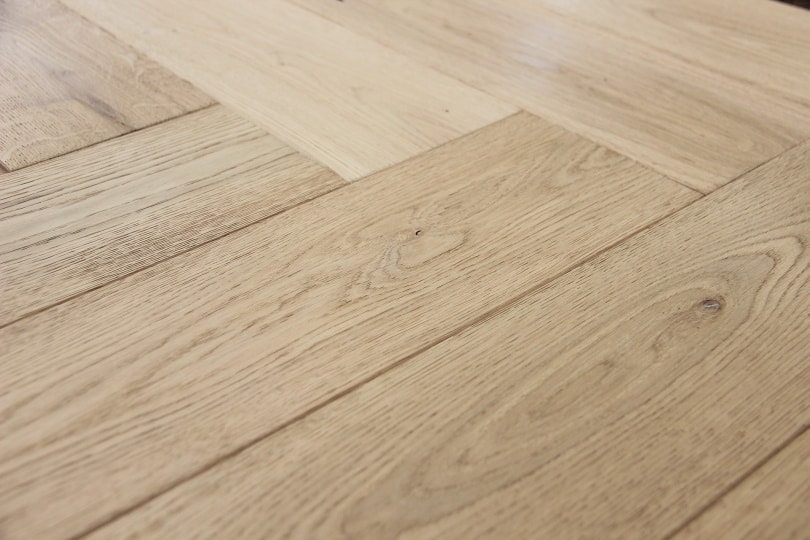
Engineered vs Solid Flooring: Choosing the Right Style
So, after checking all the options on the table, you finally decided on which wood species to use. But what about the flooring type? Should you go with solid flooring, or engineered? Let’s find out!
Solid Flooring
With solid flooring, we’ve got hardwood planks constructed from a solid, monolithic piece of wood. They look “expensive” and add a nice, warm touch to your home. Solid flooring is incredibly durable and comes in a variety of finishes and cut patterns. However, it’s weak against humidity/moisture and not particularly cheap.
- Looks great untreated
- Durable and long-lasting
- Lots of customization options
- Weak against moisture
- Quite expensive
Engineered Flooring
In contrast, engineered flooring is made up of multiple layers of wood (usually, three of four, including the solid veneer) pressed together. This type of flooring is more flexible and resistant to environmental factors. It doesn’t break down easily when exposed to extreme cold or heat. In addition, it’s quite affordable. You can’t refinish or sand it, though.
Also, engineered flooring has a shorter lifespan and is slightly less durable. If you’re planning on selling your house in the future, it won’t add much value to it.
- Affordable
- Highly flexible
- Strong against weather elements
- Modest lifespan/durabilit
- Low resale value

Are Parquet and Laminate Flooring Styles Worth It?
Unless you know your way around wood, you might think that laminate is solid wood. However, it’s a fiberboard (yes, like MDF), and the nice texture on top of it is actually a photographic image. This type of flooring is best for living rooms and playrooms. It’s easy to install and cheap, but if you opt for a more natural texture, that will cost extra. Still, laminate doesn’t ever look quite like the same thing. Furthermore, it’s weak against moisture.
- A great choice if you’re on a tight budget
- Simple to install (the Click-lock designs)
- Lots of different textures to choose from
- Tends to look a bit “cheap”
- Susceptible to humidity/moisture
Next, we’ve got parquet flooring. It has a very distinctive look and consists of hundreds of small wooden strips/blocks. It works in living rooms and bedrooms but isn’t recommended for bathrooms. Parquet flooring can be made from engineered or solid wood and takes little effort to clean, but it takes time and skills to install properly.
- Durable and long-lasting: perfect for “busy” rooms
- Available in many different patterns
- Expensive, compared to laminate
- Can be a challenge to install
- Weak against moisture and UV rays
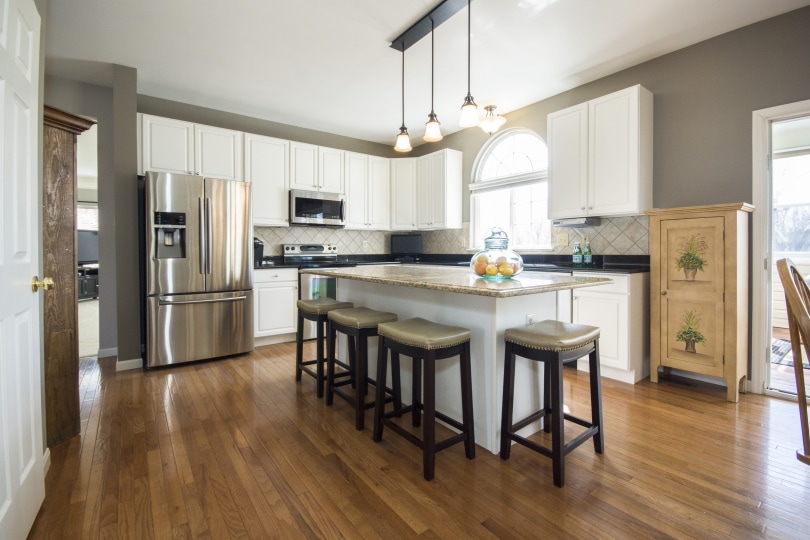
Conclusion
Wood flooring is no small task, and, unless you know your options and weigh all the pros and cons, it can be quite hard to find what’s right for you. Today, we talked about the best wood species for wood flooring. They’ve proven to be hard, durable, dense, and resistant to rotting and decay. On top of that, most are easy to work with thanks to natural flexibility.
Next, we learned the difference between hardwood and softwood species, along with the advantages and disadvantages of solid and engineered flooring, laminate, and parquet. It’s safe to say that there are no 100% right or wrong picks here. It all comes down to what you’re looking for and your budget. Take care, and we’ll see you next time!
- See Also: What Is the Best Wood for Floors?
Featured Image Credit: Francesca Tosolini, Unsplash
Contents

